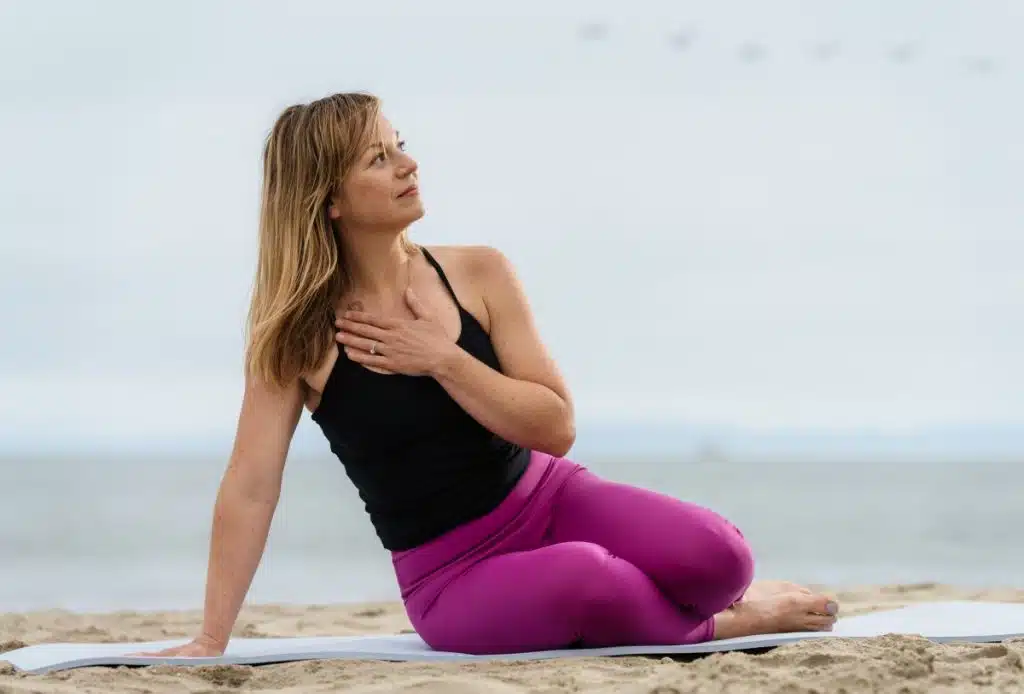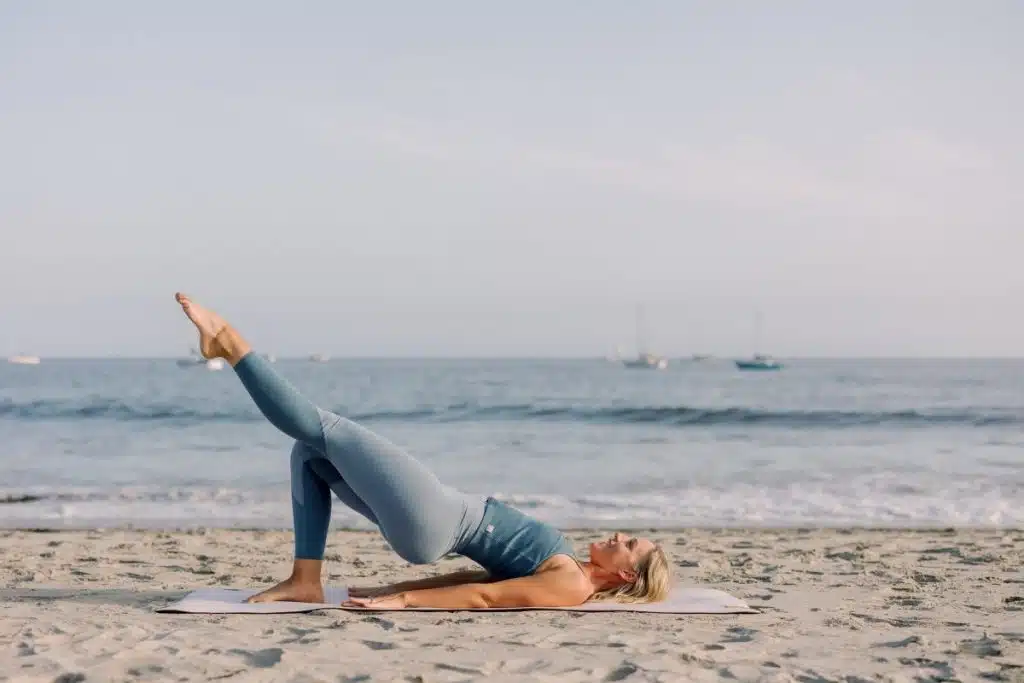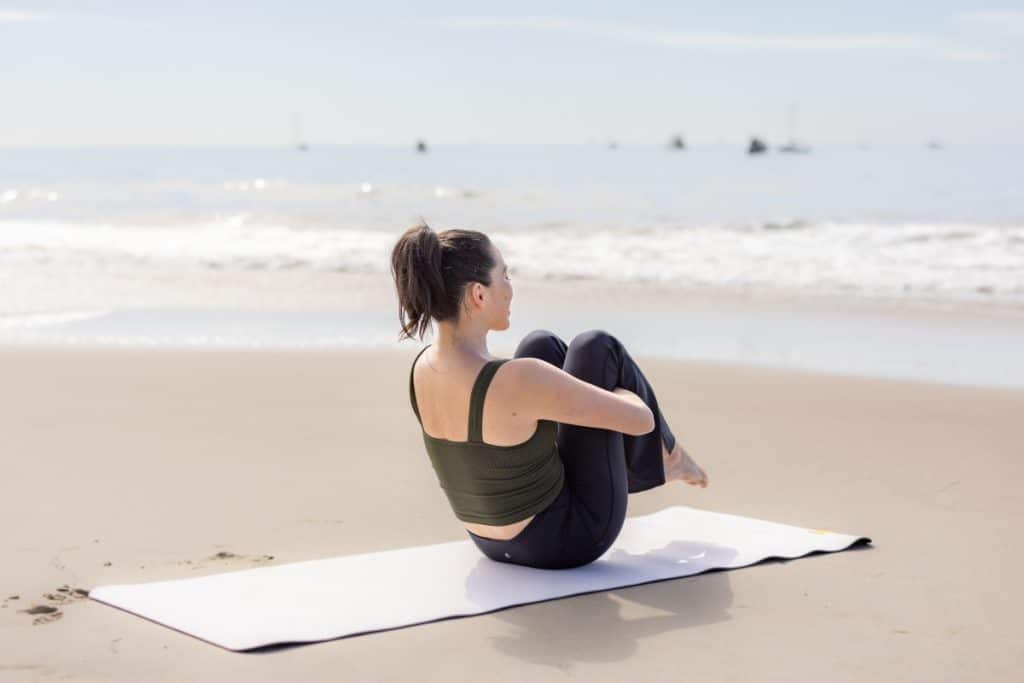
The difference in the spelling of mindful vs. mindFULL is minor, but the difference in how each of these things can impact your life is significant.
You’re probably familiar with the feeling of being mindfull. It starts from the moment you hear the alarm each morning, as the thoughts come rushing in:
What time is that appointment tomorrow?
I need to pay that bill later today.
What should I make for dinner tonight?
This isn’t surprising, considering the average human processes about 6,200 thoughts per day. As a busy mom and business owner, I am working on this daily. My mind gets so full and runs wild with thoughts of to-do list items, past conversations, upcoming meetings, etc.
But notice how none of those thoughts pertain to the present moment. It’s normal to have a mind full of thoughts, but focusing so much of our inner dialogue on what’s behind or ahead, what could go wrong, or what we might miss, can lead to anxiety.
If we’re being honest with ourselves, most of us automatically slip into this anxious state automatically—and that’s okay. Awareness of this is key to shifting to being mindful vs. mindfull so we can finally experience more inner calm.
Please note that if your thoughts feel debilitating and this shift feels impossible, we recommend reaching out to a therapist or psychologist for personalized support.

What Does it Mean to Be Mindful?
Mindfulness is an awareness that arises when you’re present and attentive to life in real-time. Here’s an example that might sound familiar:
You turn off the shower and think: I don’t recall anything from the last 10 minutes. That inner chatter had you so distracted, you didn’t even notice the hot water on your skin or the smell of the soap in your hair.
I know I can go through entire routines, like showering, without even noticing what is really happening. I’ve tried to implement more rhythms and routines into my day to bring me back to a place of more mindfulness, which is the experience of noticing those sensations, tuning into the moment, and being present, rather than getting lost in your thoughts.
It’s not about silencing the chatter altogether (reality check: that’s pretty much impossible!) but bringing awareness to it and then tuning in to back into the sensations and experiences of the present moment.
In doing this, you may experience:
- Greater ability to control your reactions
- More confidence
- Easier decision-making
- Less stress
- Better adaptability
- Reduced anxiety or depression
- Stronger mental resilience
- Improved problem-solving skills
- Stronger concentration
One of my favorite things about Pilates is the way that it has helped me to become more mindful. As a mindful form of exercise, (we don’t tune out in Pilates, we tune IN to our bodies) I found I felt more balanced, more peaceful, and less reactive. That impulse to criticize myself or get lost in my anxious thoughts became less automatic and it made every aspect of life more enjoyable. Breathwork has helped me with this as well!
What Does It Mean to Be MindFULL?
Nope, we’re not repeating ourselves! The difference in the spelling of mindful and mindFULL may be easy to miss, but the impact in life is significant! That shower experience I mentioned above is an example of being mindFULL; all the tabs in your brain are open, the chatter is going—your mind is full.
Whether you’re prone to ruminating on the past or anticipating the future, getting stuck in this constant state of anxious thinking can lead to depression, anxiety, substance abuse, eating disorders, or insomnia, among other health challenges.
I know how these thoughts can feel intrusive and all-consuming, making it seem impossible to shift into mindfulness. However, I’ve learned that not only is making this shift possible, but it will have a ripple effect throughout your life.
How to Cultivate a State of Mindfulness
If you’re ready to replace the anxious mindfull spiral with mindful inner calm, here are a few simple strategies to try. The key is to practice mindfulness in small, consistent ways so you can build it into an automatic habit over time.
Notice Inner or Outer Sensations
The goal of this practice is to name your feelings as they arise, and then notice what that physical sensation is in your body.
All thoughts and emotions are connected with a physical reaction. For example, when I feel stressed, I notice my stomach tightens and my shoulders creep up and feel tight. You may also notice your throat constricts, your hands tingle, or your armpits sweat. On the other hand, a sense of calm might cause your breath to deepen, your shoulders to relax, or your chest to expand.
Another simple starting point for this is to check in with your senses. Start by looking around you and naming one item you can see, one you can touch, one you can hear, and one you can smell. This exercise is a great way to bring your mind into the moment. I even do this with my kids to help them be more mindful too!
Tune In to Your Breathing
We offer breathwork sessions in the Lindywell app because tuning in to your breath is one of the most powerful tools in your toolbox, it certainly is for me. A recent study found that intentional breathing techniques relieved markers of depression, anxiety, stress, or other low mood states.
A great starting point is simply taking note of the natural, rhythmic flow of breath at any time will shift you into a state of mindfulness. You may also find that this almost immediately calms your mind while relaxing your muscles and body.
Try it for yourself! Sign up for your 14-day free trial of Lindywell to access our guided breathwork sessions or log into your app if you’re already a member!
Set Screen-Time Boundaries for Yourself
You’ve been there before: You open a social media app, start scrolling and before you know it, 20 minutes have passed! (This happens to me ALL the time!) The mindless scrolling fills our brain with endless content that can cause stress and anxiety.
The good news is, you can create a balanced relationship with your smartphone really easily by setting daily screen limits on social media. You can do this for yourself by setting a mental boundary or downloading an app that cuts access to the apps you specify after a certain amount of time.
With this simple boundary, you can enjoy the content you love without slipping into that mindless scrolling.
Practice Pilates
One of the reasons I love Pilates so much is because it helps me in my practice to be more mindful. It’s based on mindful and intentional movement. This means, every time you step on your mat, you’re encouraged to practice mindfulness. This is especially true for all Lindywell workouts, which typically start with a few minutes to connect to the moment, your breath, and your body. As you do each exercise, you’re continually reminded to come back to the breath again and again to notice how you feel in each exercise. This is one of the reasons Lindywell members say they feel rejuvenated after their workout instead of depleted.
Experience Pilates for yourself with a 14-day free Lindywell trial or press play on your mindful movement workout if you’re already a member of our community!
Develop a Meditation Ritual
Meditation doesn’t mean you have to sit motionless with your eyes shut and legs crossed for 30 minutes. It is simply the practice of slowing down and breathing with intention, which means you can do it anywhere, even if you’re moving or having a busy day and can’t commit to a long period of sitting alone.
Meditation can be done sitting to laying down, during walking or even stretching. In fact, coordinating movements with mindful awareness rejuvenates your mind and body.
Whether you take a meditative walk or sit with peaceful music or silence for 5 minutes, you will be practicing meditation. You can also practice breathwork, another powerful tool that carries many of the same benefits as meditation. If you’re new to breathwork, try our guided Breathwork for Anxiety. If you’re not a member yet, start your 14-day free Lindywell trial to get immediate access to this session.
Create Calm By Being Mindful vs. MindFULL
No one’s perfect, it’s nearly impossible always to be mindful. But when we check in with ourselves and remember that we can choose what gets our focus, attention, and mental energy we set ourselves up for less mental chatter and more enjoyment. Try checking in with yourself this week to see if you’re being mindful vs mindFULL. It could make all the difference!









4 thoughts on “Mindful vs. MindFULL: How to Shift Out of Anxiety and into Calm”
Wow, this blog post on the difference between being mindful and mindful is really informative! As someone who struggles with anxiety and being overwhelmed by my thoughts, I found the tips and strategies for cultivating mindfulness to be really helpful. It’s easy to get caught up in the constant chatter in our heads and worry about what’s to come or what’s already happened, but being present at the moment can bring so much more calm and inner peace.
I also appreciate the reminder that being mindful doesn’t mean silencing the chatter in our heads altogether, but instead bringing awareness to it and then redirecting our attention to the present moment. Examples of practices like noticing inner or outer sensations and tuning in to your breathing are simple yet effective ways to build mindfulness into your daily life.
Overall, this blog post has given me a lot to think about and I’m excited to start incorporating these mindfulness practices into my life.
We are so glad that you found this blog helpful and that it resonated for you! We hope that you find a little calm and peace each day. <3
Wonderfully explained. A regular workout routine with rightly guided exercises does wonders.
We are so glad that you enjoyed this and found it helpful!